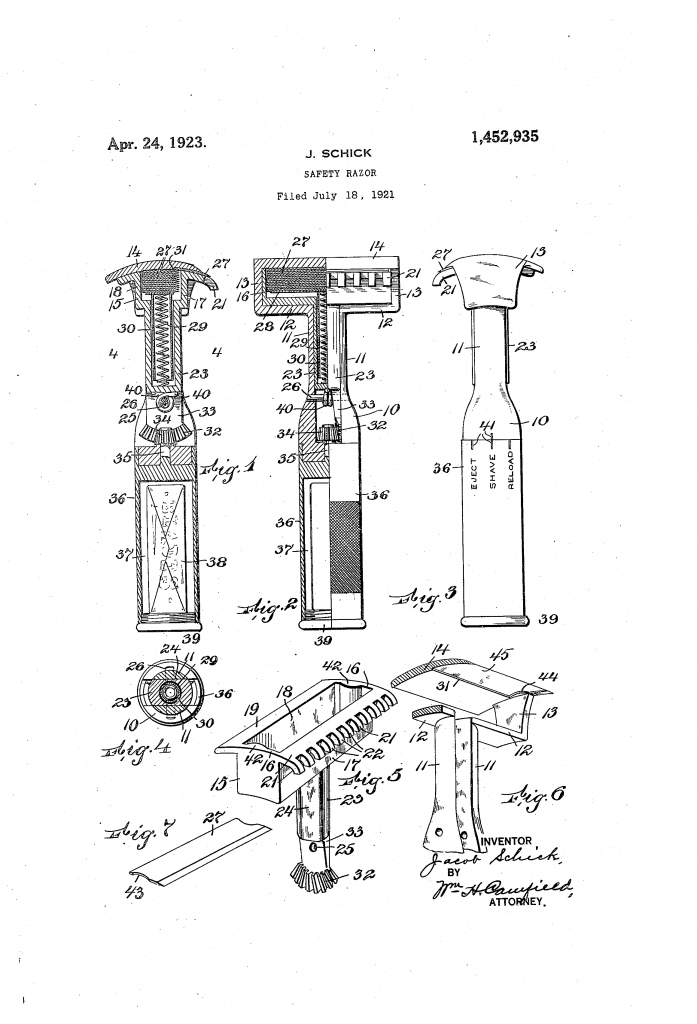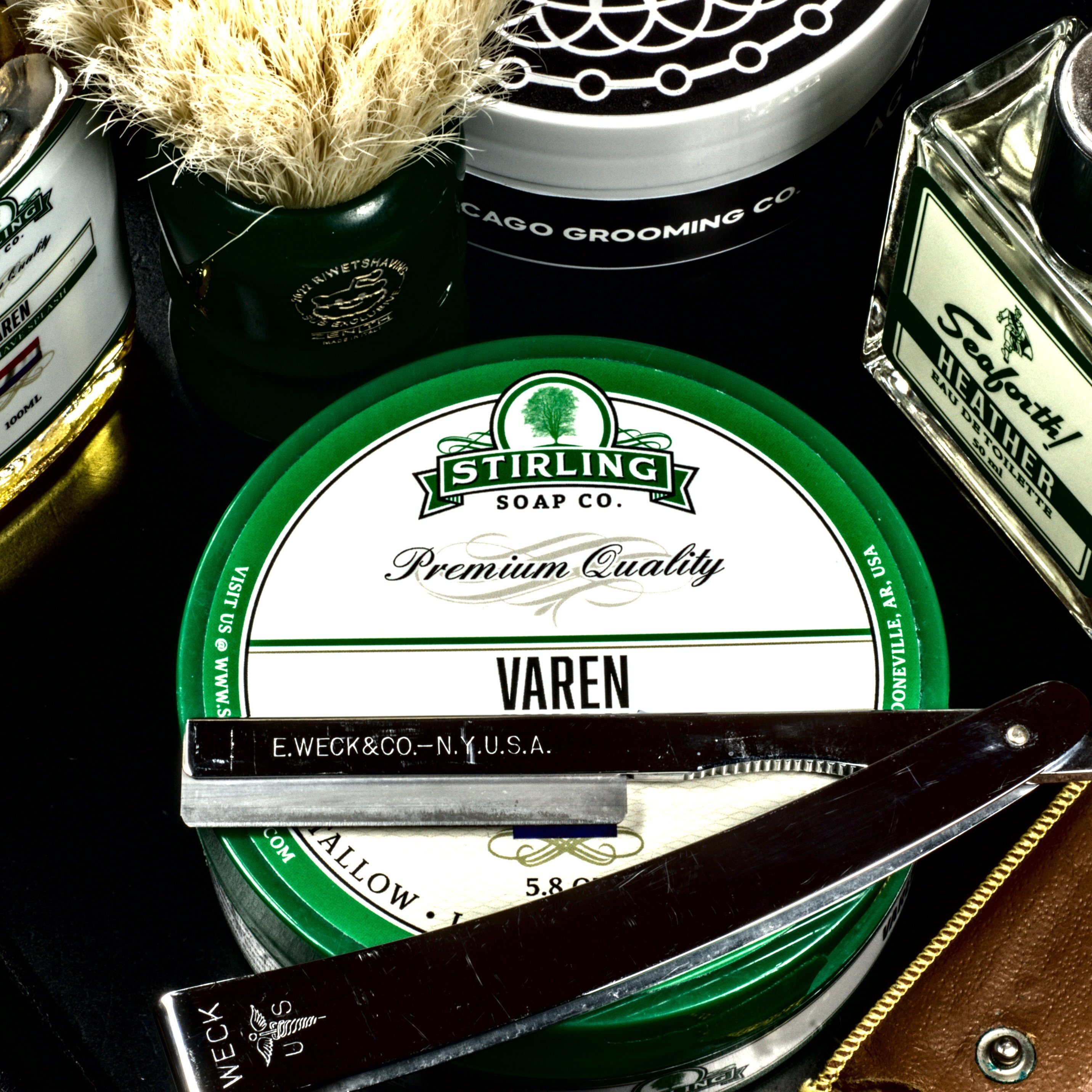We all know that the Type A was the first Magazine Repeating Razor. But nothing gets created in a vacuum, and Jacob Schick filed a patent for his first repeating razor as early as 1921. And while it could hold a blade pack in the handle as the later types A through C, the main magazine was in the razor’s head.
As I’ve said over and over again, an invention is an attempt to solve a problem. And reading Jacob’s patent, it is clear that his repeating razor was aimed at simplifying the act of changing blades. To quote:
This invention relates to an improved safety razor which is adapted to use what are commonly known as wafer blades, that is, thin blades, these blades being held within the razor and adapted to be fed therefrom into shaving position when desired, and can be pushed beyond the shaving position for ejection or either to be replaced by a new blade or for the purpose of washing the blade and the razor.
The idea was both simpler and more complex than the later Magazine Repeating Razors. Unlike the later, the head didn’t need to rotate through 90° to be reloaded. On the other hand, the relatively simple plunger hadn’t come into existence yet. Instead the top plate of the head was made to pivot, controlled by the twisting of the handle.

Patent drawing from US patent 1,452,935
As can be seen from the drawing, the handle can rotate in relation to the neck and head. A spur gear is secured to the stem the handle rotates around. This spur gear interacts with a rack that connects to the top plate with a pair of lever arms.
Twist the handle in one direction, the used blade is ejected. Twist it in the opposite direction, an edge on the underside of the top plate picks up a new blade. Return the handle to the centre, and you’re good to shave.
It’s a fairly simple system, and it has both good points and bad points compared to the later Magazine Repeating Razors.
On the plus side, there is no blade carrier as you’ll find on the later repeating razors. No carrier means you can’t insert it the wrong way… which incidentally means that you’ll jam up the inner workings. And you can keep a spare pack of blades in the hollow handle.
As for the negatives? Well, the razor head don’t fold, meaning this repeating razor is less well suited for travel. The blade stack is kept close to the actual shave, so you’ll risk corrosion. And unless there is a detent, there is the chance of the handle twisting as you shave.
I can see why Jacob didn’t put this repeating razor into production. The later magazine repeaters are both more convenient with their folding heads, and there was less risk of carbon steel blades rusting. At the same time I can see this razor doing okay today, with stainless steel blades and less focus on portability.
You can read the full patent text for Jacob Schick’s first repeating razor at Google Patents.

